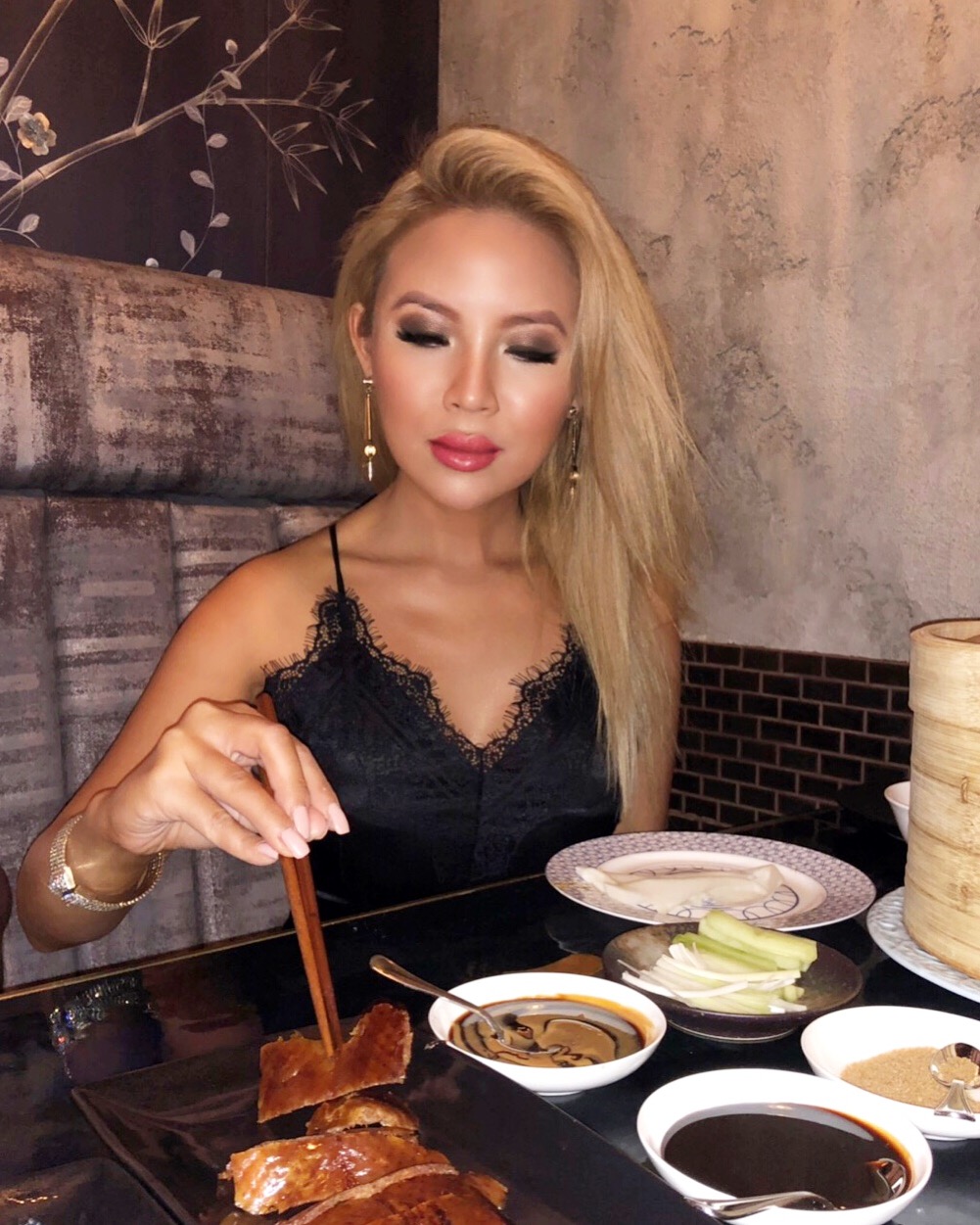
Yvon Lux is a tastemaker, influencer and storyteller with a syndicated Apple News channel. Her “blogazine” celebrates sisterhood and empowers women by focusing on women’s health, travel, food and entrepreneurial news while sharing coveted fashion and beauty trends and stories. The young female founder enjoys working with start-ups to large corporations, and has been featured in many media outlets. We were delighted to discuss how Yvon became an influencer and her strategies to distinguish herself in a highly competitive market.
ShePreneurs (‘SP’): What value do you think influencers bring to companies/organizations and consumers?
Yvon Lux (‘YL’): The popularity of influencer marketing is still skyrocketing due to its effectiveness. According to Business Insider Intelligence, the influencer marketing industry is on track to be worth up to $15 billion by 2022 ($8 billion more than in 2019). Besides communication and entertainment, people continue to rely on social media to form buying decisions. This makes influencers valuable to brands and consumers. We rarely buy without going online and using social media to read reviews/reactions and get inspired based on others’ experiences.
As someone who started blogging a couple of years ago, now with syndicated channel on Apple News, it was only recently that people and brands began to see me as an up and coming tastemaker and ‘influencer’ (I prefer to inspire, bring awareness and review rather than to ‘influence’).
Brand fit is key. I only partner with brands, products and services I like and think that my network would benefit from knowing about them. I am extremely selective and only say yes to 40% of collaboration requests. I get everything from clothing, skincare, lingerie, experiences, food and beverage, lodging, makeup, cosmetic surgery, etc. As a matter of fact, I have tried products that I don’t particularly like. When this happens, I do not post about them and instead provide genuine feedback to the PR person privately via email.
SP: How are you and your influencing strategies different?
YL: As a content creator, I’m not for every brand and I don’t try to be. The most successful relationships I’ve had when partnering with brands are long term collaboration seekers. I feel like a one-off post doesn’t offer much value. Many content creators post about a different product with every new post. How do you really know what they really like? You will see me talk and post about the products and services I favor repeatedly.
Here are the 3 types of networks (‘followers’) that connect with me on social media:
Asian American consumers are a demographic I can closely relate to. According to Nielsen’s 2019 Diverse Intelligence Series, “Asian Americans offer unparalleled marketing opportunity for businesses and brands.” They are informed influencers and powerful purchasers as they lead in household income and education.
Career women also identify with me and my multi-tasking lifestyle. We love products that make our lives easier, make us feel better and enjoy luxurious experiences and services as a reward for our hard work.
As a woman living in California with New York roots, my lifestyle, beauty, fashion, social choices and content are relatable to women who enjoy either coast or anyone in between who enjoy following similarly exciting activities. Experiences have shown that they follow my content for recommendations, mentions and inspiration.
How do I know this? I’ve received messages asking about a pair of boots I wore, the Peking duck I posted about, or how far is the convention center from the hotel I stayed in. So if a brand is focusing on niche and targeted reach, which I think is a smarter way to approach influencer marketing, then I’m their to-go person.
SP: What are the most significant challenges that influencers encounter and how do you overcome them?
YL: Due to the heightened popularity of influencer marketing and the perks and status influencers enjoy, everyone wants to become an influencer. It’s getting blurry and the competition is really intense. Influencers are struggling to stand out to brands.
To overcome this, I just focus on being myself. I don’t try to be everything to everybody. You won’t see me promote 100 brands of lipstick or post about a new hair product everyday. Because if I do, then my smart network will realize that I’m not truly liking anything and that I’m simply posting for pay. When you follow me, you will start to see that I have brands and products that I’m loyal to. However, this helps and hurts me. It helps because I’m sharing brands I’m confident about knowing that my network benefits from it. It hurts because I don’t share as much content as other influencers who say yes more often and create content regularly as required. I earn less partnership opportunities because I’m so selective.
It’s important to me to remain an authentic brand advocator and only recommend products and services I truly like. Brands who prioritize selectiveness and loyalty will see value in working with someone like me. I’m not a product pusher. The things you see me post about are the things I do use daily, weekly, monthly or occasionally.
SP: What are your best tactics to convert online sales?
YL: Below are some ways that help social media collaboration between a content creator and brand to generate ROI:
First, brand alignment and fit. The brand and the content creator have to be a good match. This responsibility is on both parties. The brand needs to vet and understand who this creator is and what her/his following looks like and are they the right demographics geographically, ethnically, financially, etc. Meanwhile, the content creator needs to be consistent in the brands s/he chooses to work with and that s/he is not just pushing another product.
Second, authenticity matters. The content creator needs to genuinely think that her/his network will really enjoy the product or appreciate the service.
Third, the message is clear. The final content has to be appealing and focused. If it’s a luxurious brand, is the content creator able to create sophisticated visual, written and oral content that accurately and aesthetically represents the brand?
Fourth, the brand is appealing. Influencers and content creators work to generate curiosity and visitors. The brand’s message and quality must be saleable and align with the creator’s review, otherwise the visitors will not convert into customers.
Lastly, sales may take a while. There have been several instances that someone from my network reaches out a few weeks or months later after a post and let me know they’ve tried something or some place I’ve recommended. Instant conversion isn’t a realistic expectation unless it’s a time-limited promotion. If possible, multiple posts is better than one-off post.

SP: How do you incorporate food into your business model and how effective are the results?
YL: As a real foodie with a discriminatory palate, this is not hard. You can make good friends and do business over good food. My line of work requires me to eat out often. I also seek out good food when I travel as it’s a big part of a memorable trip. Food integrates well with my work because even if I’m a lover of fashion and beauty products, I still have to eat, at least once a day.
SP: As a PR and marketing professional, at what point did you commit to being a professional clothes designer and having a subscription service as well?
YL: I used to come from the corporate world of suits and professional wear everyday. It wasn’t easy finding elegant and fashionable work wear as a petite woman. I started customizing and creating my own looks and outfits. Eventually, I decided to offer this service to a small group of clientele who are busy career women, socialites and beauty queens who don’t have time to shop or prefer custom choices.
SP: What is your advice for people who want to become influencers?
YL: Do it and you don’t need a million followers. The most talked about trend in influencer marketing is that brands are seeking out micro influencers and nano influencers. This new term ‘nano influencer’ means social media users who have a few thousand followers. Smaller influencers tend to have a more centralized and focused following and reach. They are also more cost-effective.
Focus on Instagram, at least for now. Approximately 80% of brand partnerships take place on Instagram.
The quality of your posts matter. Instagram is essentially a best photo contest so be sure to post good quality photos and videos. However, visually stimulating aesthetics isn’t everything. Just because an influencer uses amazing filters and presets doesn’t necessarily mean they can influence. People may follow them because the content is visually appealing. Make sure your personality and message are true to yourself and are relatable. Be selective and don’t try to sell everything to everybody.
Focus on being a better you and don’t try to compete with others. There are plenty of collaboration opportunities to go around so don’t feel like you need to compare yourself. Use other influencers as inspirations and idea generators. If you’re newer, don’t stress out by comparing your phase one to someone else’s phase ten. Learn how to approach brands professionally and you may earn collaboration opportunities. Don’t take it personally if you don’t get a ‘yes’.
If you identify as a minority and can represent that or have a unique reach within a certain population, you should perhaps highlight that niche. Brands are getting more focused with their social media marketing efforts.
*Did you enjoy this interview? Please feel free to nominate other interviewees for our GlobePreneurs Win Series and enjoy life to the fullest around the world with us on Instagram, Facebook and Twitter!

